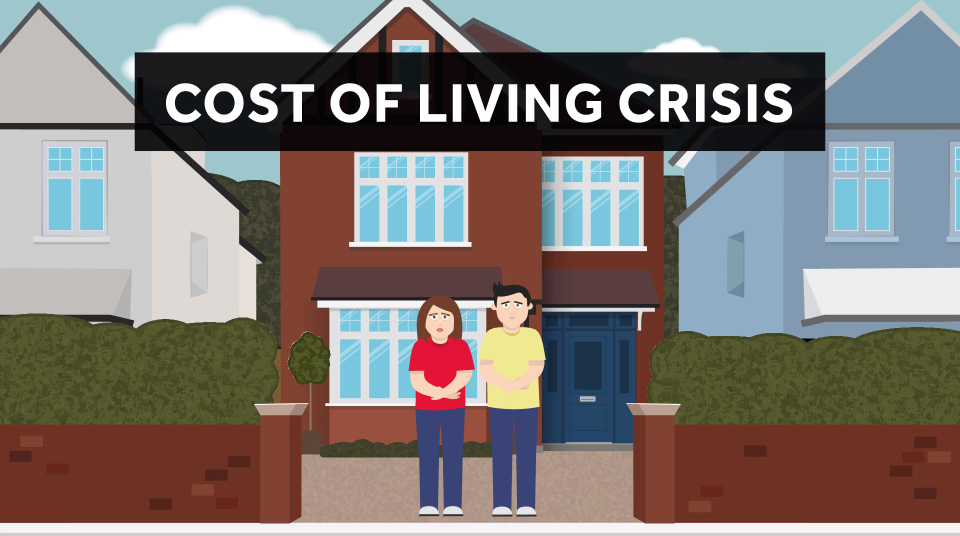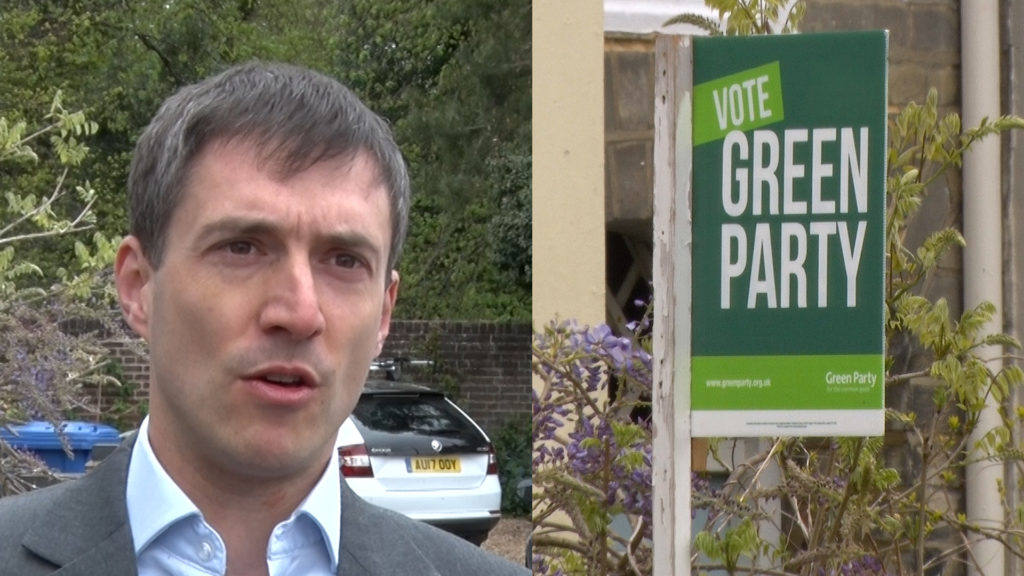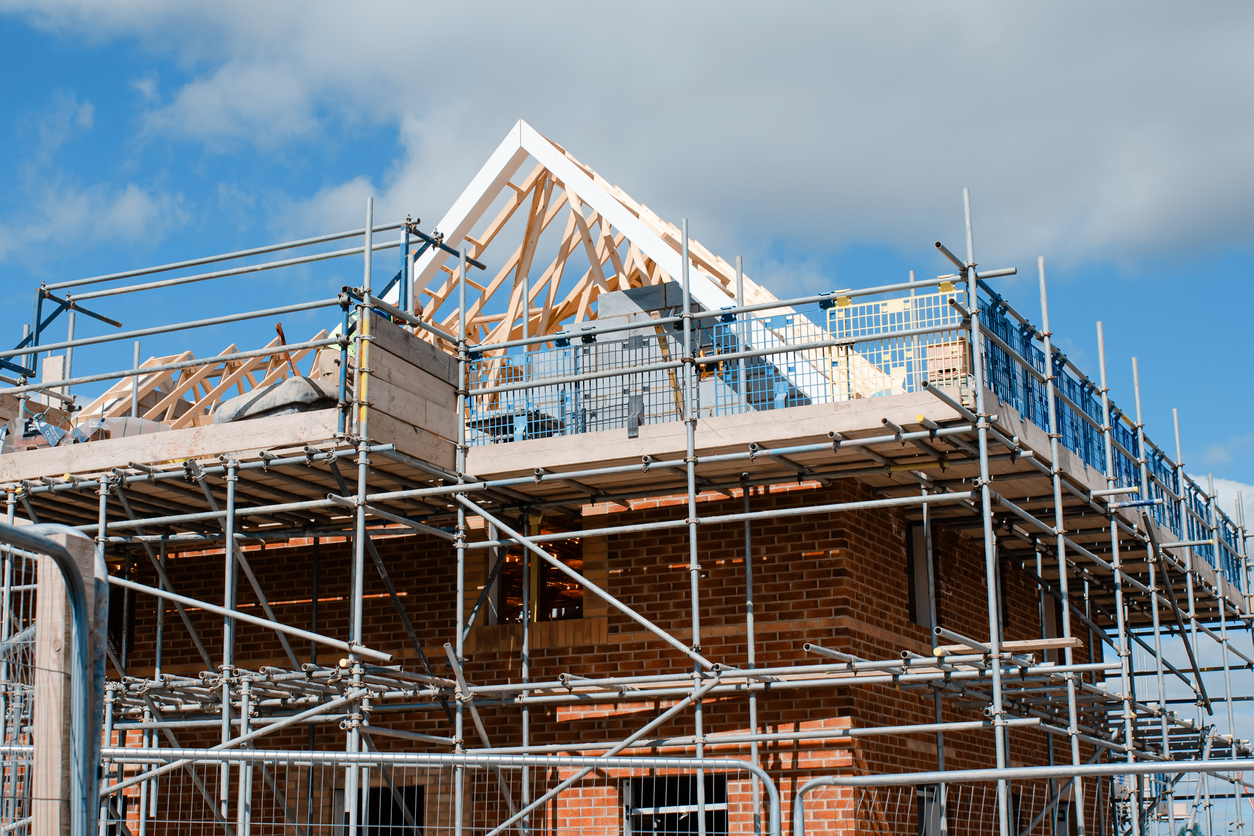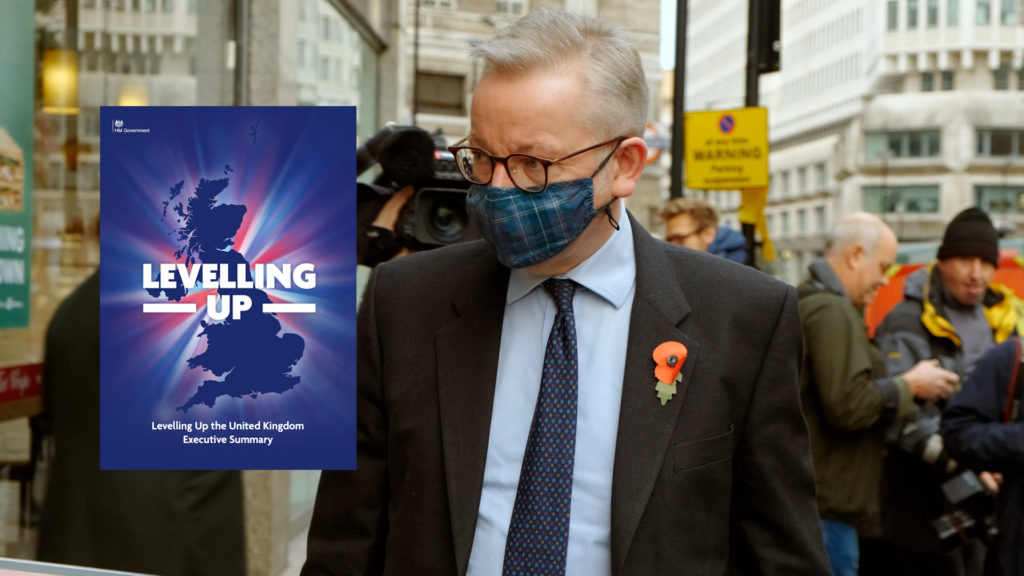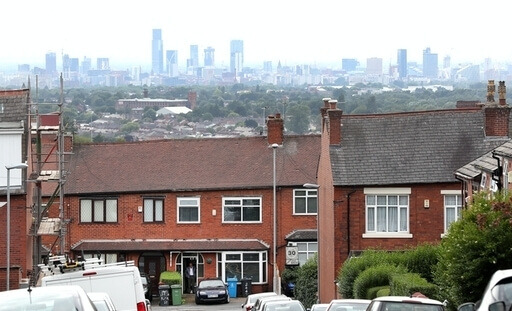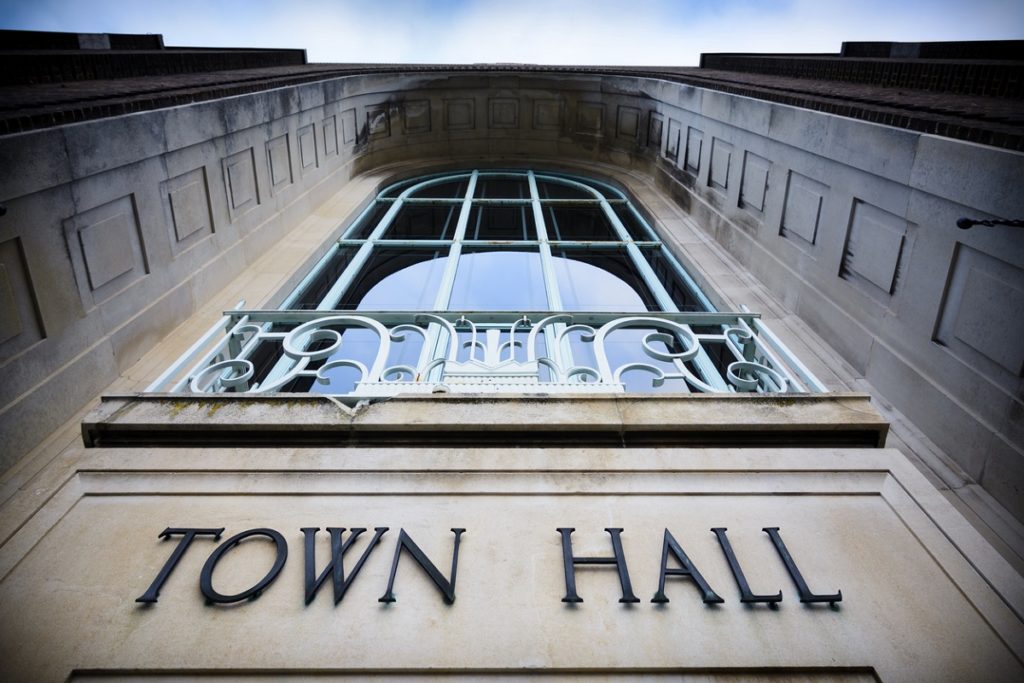Council tax bands – How do they work?
The Valuation Office Agency (VOA) assigns all properties a council tax valuation band. This is based on estimates of the property value on 1 April 1991. The level of council tax paid, depends on the band of the property concerned. The valuation bands for England and Wales are as follows:
| Valuation band | Range of value |
| A | Up to £40,000 |
| B | Over £40,000 and up to £52,000 |
| C | Over £52,000 and up to £68,000 |
| D | Over £68,000 and up to £88,000 |
| E | Over £88,000 and up to £120,000 |
| F | Over £120,000 and up to £160,000 |
| G | Over £160,000 and up to £320,000 |
| H | Over £320,000 |
Under specific circumstances, properties may move between a council tax band. This may be the case if part of a property has been demolished, if a single property has been divided into self-contained flats or vice versa, or if developments in a local area require additional funding.
How much is council tax per month?
Rates of council tax are determined by an individual’s property value, personal circumstances, and how much funding is said to be required by the local council (coupled with how much has been allocated by central government). People pay the fee related to the council tax band in which their residence falls.
For example, a Band A property in Gillingham (Kent) would pay £1,334 in 2023/24 (circa £110 per month). A Band D property in Gillingham would pay £2,001 per month (£166 per month). A Band H property in Gillingham would pay £4,003 per year (£333 per month).


By contrast, In Wigan, a Band A property would pay £1,160 per year in 2023/24, a Band D property would pay £1,740 per year, and a Band H property would pay £3,480 per year.
Everyone over the age of 18, who rents or owns a property, is liable to pay council tax. A council tax bill is based on two cohabitating adults. Spouses and partners who live together are jointly liable for the payments.
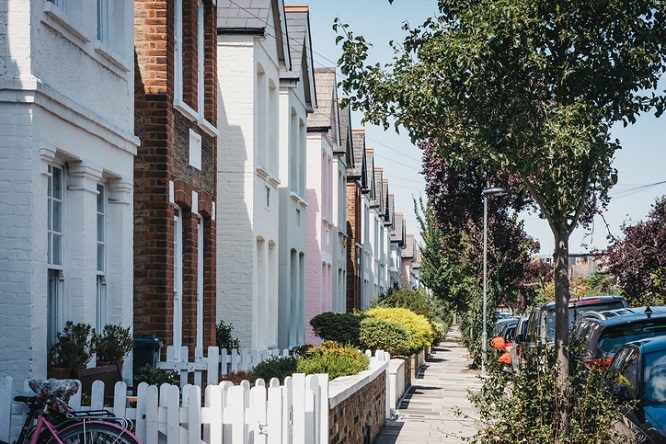
Council Tax bands have remained unchanged since 1991, something which has benefited those in South West London where house prices have rocketed.
Discounts and Exemptions
Adults receive a 25% reduction in council tax if they living alone, or if no one else in the property counts as an adult. A 50% council tax discount is granted if no one living in the home counts as an adult.
Full-time students and student nurses are not liable to pay council tax. Neither are people with severe mental health impairments, or live-in carers of no relation to their patient. Further exemptions apply to prisoners or people awaiting deportation, a member of a visiting armed forces, and foreign diplomats.
Those living on a low income or in receipt of state benefits may be eligible for Council Tax Reduction (previously known as Council Tax Benefit).
In February 2022, the government announced that those properties in Council Tax bands A to D would receive a £150 discount on their council tax in order to help with the rising cost of energy prices.
How Council Tax is paid
Council tax payments are split into 10 monthly instalments. Payments are generally made by setting up a direct debit or standing order. The tax can also be paid online, over the phone by a debit card or credit card, or by sending cheques in the post. More recently, ‘Paypoint’, ‘Payzone’ or ‘Quickcards’ are used for cash payments at post offices, banks, newsagents and convenience stores.
Non Payment Action
If a council tax payment is missed, the resident falls into arrears. The council will then send a reminder notice, allowing an additional 7 days for the payment to be made. If the payment has not been received within this time – or if this is the third late payment in a year – the council will issue a final notice, ordering for the whole years’ worth of Council Tax to be paid in one sum. If this is not paid, the council may ask a magistrate for a liability order – a legal demand for payment.
Continued refusal to pay may result in the billing authority requesting the resident’s employer to pay the tax from their wages. It may also be deducted from benefit allowances such as income support, jobseeker’s allowance, or universal credit. In extreme cases, the council can send bailiffs to visit insolvent residents and, ultimately, take them to court.
Advantages of the council tax system
Testament to their efficacy, almost every developed country applies varying forms of property taxes.
The Audit Commission in 2004 branded council tax an effective and fair form of local taxation. The advantages of the current system are that, the tax is easy to calculate, has relatively low collection costs and generates high yields. As England’s primary form of property tax, council tax serves to widen the country’s national tax base by a substantial amount.
The Local Government Information Unit have also noted the predictability and stability of council tax revenues for local authorities.
It is suggested that much of the criticism of council tax, is a criticism of the funding required by local government, and a function in part of the lack of finances assigned from central government. However, with local authorities needing to have some local accountability for their tax and spending, it is argued that if not through council tax, this funding would still need to be collected by some form of local taxation or levy.
Problems with the council tax system
In recent years, council tax has sparked widespread discontent over accusations of fueling regional inequalities. The Institute for Fiscal Studies (IFS) described council tax as “increasingly out of date, arbitrary, and highly regressive with respect to property values”.
This is largely attributed to the fluctuation of property values since the taxation bands were introduced in 1991. Since that time, house prices have not changed uniformly across the country. The IFS notes that property values in London have increased over six-fold since the mid-1990s, whereas those in the North East have seen little more than three-fold increases.
While tax rates are still based on 1991 values, therefore, properties located in gentrified areas (such as in many parts of south west London) are subject to relatively low council tax charges relative to their current value. Taxes are gathered at the rate assigned to the property some 30 years ago.
Opponents of the current system, argue that the existing valuation bands pose disproportionately high burdens on those with low or fixed incomes, while high-earners remain relatively unscathed.
In light of these objections, many critics propose reform to council tax payment structures, rather than the total abolition of the system. It is suggested that a re-evaluation of the tax could help to reduce regional inequality within the UK, thereby contributing to the government’s proposed levelling up agenda.
As noted by the Institute of Fiscal Studies, revaluating all properties based on their 2019 values would cause average bills in the Midlands, North, and much of the South West to decrease, while increasing rates in London. A predicted 2.6 million properties would be subject to tax reductions of over £200; whilst a further 2.6 million would be subject to increases of the same value. This restructuring would ensure that council tax rates are aligned more closely to a property’s up-to-date value.
Alternatives to council tax
A number of alternatives have either been tried, or suggested, as an alternative to the Council Tax as a means of raising local government finance.
Poll Tax
The so-called poll tax (or community charge) was introduced by the Thatcher Government as part of an overhaul of the then domestic rates system in 1989.
However by taxing people rather than property, the community charge suddenly taxed large numbers of people previously excluded. Only about 25% of local people were issued with bills under the rates system, but the new system charged all individuals, including adult children living with parents and lodgers.
Although attempts were made to mitigate the regressive effects of the community charge by a series of discounts and exemption, there was considerable public opposition to the poll tax and many people refused to register to pay it. And where houses were immobile, people were not. Tracking citizens’ movements, combined with widespread protests and non payment, presented significant challenges in the operation of the system.
The Poll Tax was subsequently abolished by John Major when he became Prime Minister and replaced with the current Council Tax regime.
Local income tax
A local income tax has been advanced on multiple occasions as an alternative to council tax. In 1976, members of The Layfield Commission spoke of the necessity of creating greater local accountability by shifting the bulk of funding from central to local government.
More recently, the Liberal Democrats have suggested replacing the current council tax system with a local income tax. It is argued that a local income tax would not only increase accountability, but it would introduce more proportionate charges across different income brackets.
Opponents of the local income tax idea, point towards the likelihood of high administration costs, complex collection methods, and uncertainties surrounding its redistribution effect.
Local sales tax
The introduction of a local sales tax is another idea muted as a potential funding mechanism for local government, and local sales taxes are in place in a number of other countries.
A local sales tax could involve a local levy being ‘piggy-backed’ on to the existing VAT system for all retail sales. However, critics of this idea, point to its complex and costly administration. Under such a system, HM Revenue and Customs would have to assess what percentage of sales, from each business, were made to final consumers in each area. This form of tax could also result in cross-border purchasing problems, whereby individuals trying to avoid high local tax rates, moved to shop in neighbouring lower tax areas. Business and retail may also choose to follow their customers and migrate towards these lower tax areas.
Introducing a sales tax on utility bills such as gas, electricity and water would avoid this issue, but this would pose disproportionately high charges on lower-income households, and thereby likely require some form of rebate scheme.
How much does council tax raise in England?
In addition to council tax, local authorities are funded by central government grants and retained business rates: these are taxes charged on non-domestic properties such as shops, offices, restaurants, warehouses, factories, holiday rental homes or guest houses.
Local authorities in England receive around 52% of their funding from council tax, 31% from central government finances, and 17% from business (non-domestic) rates.
In March 2022 local authorities collected a total of £33.9 billion in council tax, from a total of £35.3 billion that was deemed collectable. In contrast business rates raise a further £25 billion per year.
Local government is financed by a combination of centrally-administered funding and locally-administered taxes. The most significant of these local taxes is council tax, which is charged on domestic properties.
Local services – such as the police force – are partly funded by council tax. This allocation of the funding is known as the ‘police precept‘. As of 2013, police and crime commissioners have been authorised to increase this precept by a limited amount without the need to hold a local referendum.
How council tax is set
From 2019-20, 317 local authorities set and collected council tax in England. A property’s Council tax is made up of a number of billing components depending on where the property is located.
Varying billing components include London borough councils, metropolitan borough councils, unitary authorities, and shire district or borough councils. Other types of authorities include precepting authorities or levying bodies.
In April 2013, the government has enforced caps on how much council tax rates can be increased by local authorities in a given year. This maximum rate of increase was introduced as 2%, before increasing to 3% under Theresa May’s government in 2018. In 2020, Boris Johnson’s government returned the rate of increase to its 2% level
Faced with rising inflation and the cost of funding social care, from April 2023 the UK government has increased the amount that councils in England are allowed to put up council tax without having to hold a local referendum. Those with social care duties can raise council tax by 5%, while others can put it up by 3%.
In Scotland, levying authorities are responsible for setting council tax rates. Valuations are undertaken and bands assigned by the Assessors’ offices. Homes in Scotland are also assigned one of eight bands, but these are different to those in England and Wales.
In Scotland, a premium of 100% is added onto all empty properties following one year. In England, the maximum Empty Homes Premium is 50%. Unlike in England, levying authorities in Scotland don’t have the authority to reduce council tax bills at their discretion.
In Scotland, council tax was frozen from 2008-09 to 2016-17. The Scottish Government agreed to distribute £70 million to local authorities who froze council tax at 2007-08 levels. While the freeze was not obligatory, all 32 councils agreed.
On 2 March 2016, the Scottish Government published proposals for a council tax reform. This would put an end to the tax freeze and introduce a cap on council tax rises of 3% in real terms. The main aspect of the reform was that the ratios for the upper valuation bands (E-H) were to be increased.
The history of council tax
Council tax was introduced in Great Britain in 1993 to replace the community charge (or ‘poll tax’), whose turbulent short history was extremely unpopular and difficult to administer. Over the following decade, council tax received little public attention. However, rapidly increasing tax rates, have laid the foundations for growing public opposition.
Council tax combines elements of both its predecessors: the property-based rates system which existed until 1990, and the ‘poll tax’ on individuals that was introduced briefly in the late 1980s.
In July 2005, the then Labour government announced that eight local authorities in England would have their budgets capped and would need to set lower council taxes for that year. Local Government Minister Phil Woolas stated: “given that we have increased funding to local government by 33 per cent in real terms since 1997, and that all authorities have received formula grant increases either in line with or above inflation in all of the last three years, there is no excuse for excessive council tax increases.”
Following the 2010 election, the Conservative-led Coalition government promised to “freeze council tax in England for at least one year, and seek to freeze it for a further year, in partnership with local authorities.”
Subsequently, a £650 million funding pot was set aside to support councils willing to freeze or reduce their council tax charge. The Government said that as council tax had more than doubled since 1997, Ministers were “determined to protect hard-working families and pensioners on fixed incomes.” Every English council took up the Government’s offer of support; 378 authorities were able to freeze their council tax for the period 2011-12 and 43 reduced it.
A further £675 million was set aside by the Government to help local authorities keep people’s council tax bill down for the following year. In January 2012, Local Government Secretary Eric Pickles announced that 152 councils had already signalled their intention to freeze council tax for 2012-13 and he fully expected that number to increase.
As of yet, no government has directly tackled the issue of the property valuation bands, which still date back to 1991. Gordon Brown’s government briefly pledged to reassess the bands, but this was postponed ahead of the 2010 general election.
In 2016, the Government’s Fair Funding Review set out to assess the manner in which local authorities in England are funded. The review was framed by the aim of developing a new funding formula providing a simple and transparent link between local authority needs and available funding.
Consultations took place in 2016 and 2017, with the intention of implementing the review in April 2020. However, this was delayed in 2019 due to the Brexit impasse in Parliament and again, in 2020, due to the disruption caused by the coronavirus pandemic.
Statistics
In 2019-20 local authorities collected a total of £31.6 billion in council tax, irrespective of the year to which it related. This was an increase of £1.8 billion, or 5.9%, over 2018-19. That year, a further £25.6 billion was collected in non-domestic rates.
At the start of 2019-20 there was £3.2 billion of council tax arrears outstanding. During 2019-20, local authorities collected £639 million (19.7%) of this outstanding council tax, irrespective of the year to which it related (before any write off action).
In 2019-20 local authorities wrote off £171 million of uncollectable council tax, irrespective of the year to which it related.
(Source – Ministry of Housing, Communities and Local Government, 2020)
Quotes
“The failure to revalue council tax for almost 30 years means the tax bills households face bear less and less relation to the values of their properties” – Stuart Adam, Senior research economist at the Institute for Fiscal Studies, 2020
“All the surveys that we have done out in the market place and door to door have come in overwhelmingly in favour of the abolition of council tax and the introduction of a local income tax. People can see that if they have got a low income then they pay very little, and if they have got a high income then they pay more. I think that is predicated towards people’s ability to pay, and I think that is fair and people can understand that.” – Leader of Somerset County Council, 2004
“As the Chancellor has made clear, he sees a property tax as a fair form of tax as part of the overall tax system and the council tax is the principal form of property tax which we have in this country.”- The Economic Secretary to the Treasury, 2004
- “Council tax is a major drain on the bank balances of many households. Ratepayers all over Britain constantly have to pay inflation busting rises every year. Our research has shown that on average between 1997 and 2017, council tax increased by 57 per cent in real terms across England. At least in England rises in council tax are capped (usually to around 4 to 5 per cent) but this is not the case in Wales, where many councils have imposed double-digit rises on their residents” – Taxpayers Alliance.
- “It is outrageous that a person in a £17m Westminster mansion pays less than a pensioner in a Nottingham bungalow” – Patrick Collinson, writing in the Guardian, 2018.










